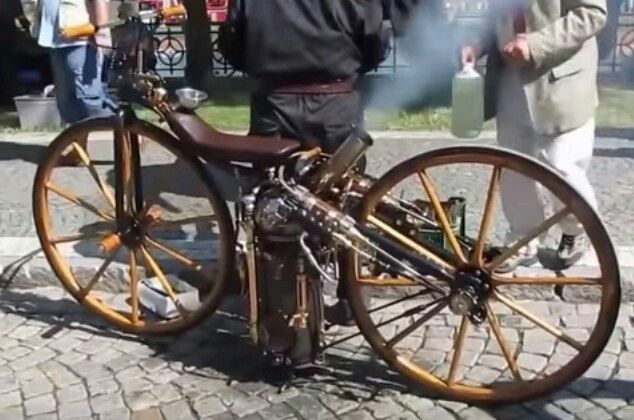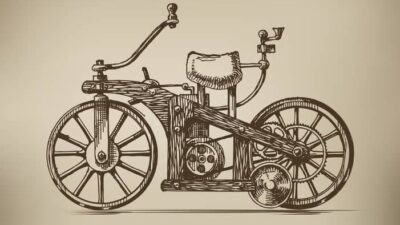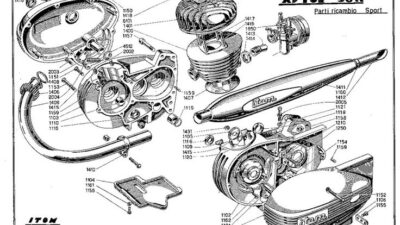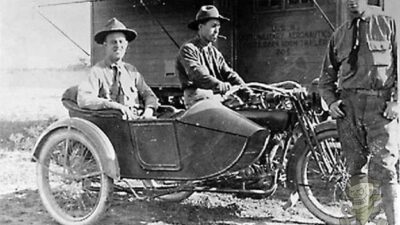The motorcycle’s journey began not with gasoline engines, but with steam power in the 1860s. The first steam-powered two-wheeler was created by Sylvester H. Roper between 1867-1869, marking the true birth of motorcycle technology. This steam velocipede featured innovations that would define motorcycles for generations to come.

Roper’s machine combined equal-sized wheels, a purpose-built frame, and revolutionary controls that riders still use today. The Boston inventor’s creation included a twist-grip control system and frame geometry that became standard motorcycle design elements. His steam-powered velocipede could reach impressive speeds and climb hills better than horses of the era.
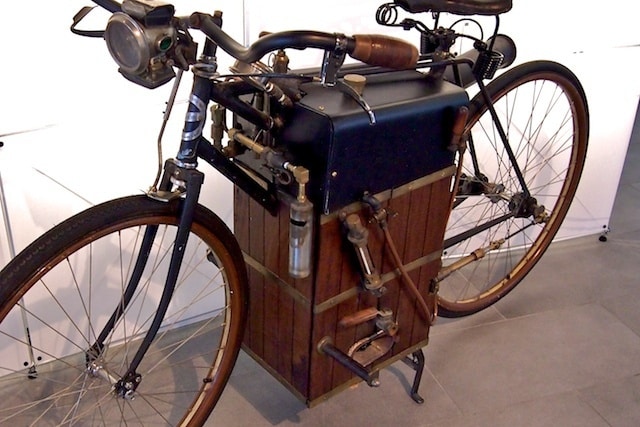
While other inventors like the Michaux-Perreaux team also worked on steam-powered two-wheelers during the same period, Roper’s design stands out for pioneering successful motorcycle technologies that influenced modern bikes. The machine now sits in the Smithsonian Institution as the oldest self-propelled road vehicle in their collection, representing a pivotal moment when transportation changed forever.
Key Takeaways
- Sylvester H. Roper built the world’s steam-powered motorcycle between 1867-1869, establishing the foundation for all future motorcycles
- His steam velocipede introduced the twist-grip throttle control and proper frame geometry that modern motorcycles still use today
- Roper’s invention predated gasoline-powered motorcycles by nearly two decades and demonstrated speeds over 40 mph before his death while riding in 1896
Pioneering the First Steam-Powered Two-Wheeler

The development of the first steam-powered two-wheeler involved early experiments with motorized bicycles and debates over what truly defines a motorcycle. These pioneering efforts laid the groundwork for modern motorcycle design through innovative engineering solutions.
Early Attempts at Motorized Bicycles
Inventors in the 1860s began experimenting with steam power to create self-propelled two-wheeled vehicles. Sylvester H. Roper built a steam velocipede between 1867-1869 in Roxbury, Massachusetts.
The Roper steam velocipede used a purpose-built iron frame rather than modifying an existing bicycle. It featured two 34-inch diameter wheels made of iron bands on wooden rims with wooden spokes.
The steam engine sat between the wheels with twin cylinders. A boiler connected to a chimney that angled backward behind the rider. The entire handlebar rotated to control both throttle and braking.
The Michaux-Perreaux steam velocipede also appeared around 1867-1869. Historians debate which machine came first. Both represent the earliest attempts at creating motorized two-wheelers.
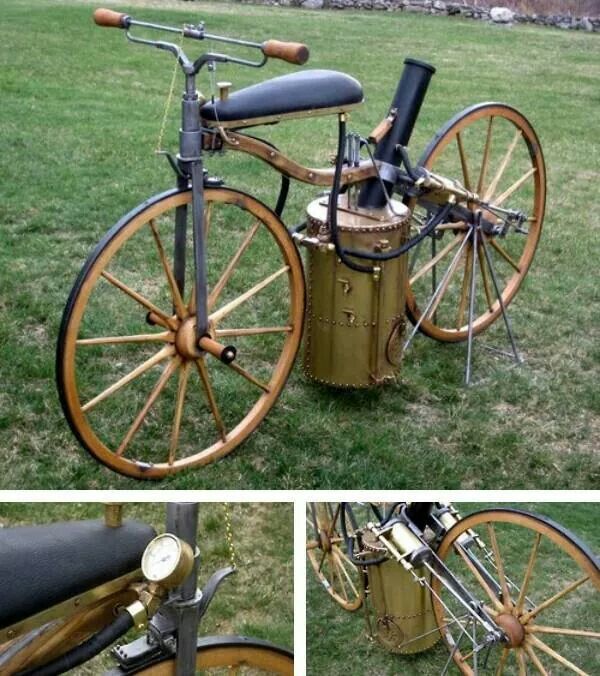
These steam-powered machines preceded internal combustion motorcycles by nearly two decades. They proved that self-propelled two-wheeled transportation was possible.
Definition of the First Motorcycle
The definition of what constitutes the first motorcycle remains contested among experts. Some sources require an internal combustion engine to qualify as a true motorcycle.
The Oxford English Dictionary and Encyclopedia Britannica define motorcycles as vehicles with internal combustion engines. This definition would make the 1885 Daimler Reitwagen the first motorcycle.
However, the Smithsonian Museum defines a motorcycle as “a self-propelled, engine-powered, two-wheeled vehicle”. This broader definition includes steam-powered vehicles.
Key factors in the debate:
- Type of engine required
- Historical significance of the technology
- Influence on later motorcycle development
Roper’s steam velocipede included elements that still define motorcycles today. These features included equal-sized wheels and twist-grip controls.
Comparison With the Safety Bicycle
The safety bicycle emerged in the 1880s with equal-sized wheels and chain drive systems. This design became the standard for bicycles and influenced motorcycle development.
Roper’s later 1894 steam velocipede used a Pope Columbia safety bicycle frame. This showed how steam power could adapt to modern bicycle designs.
Safety bicycle advantages:
- Lower center of gravity
- Better stability
- Easier mounting and dismounting
- More efficient power transfer
The safety bicycle’s geometry included proper rake and trail angles for steering stability. Early steam velocipedes already incorporated these principles, unlike some later internal combustion attempts.
Roper’s machines weighed approximately 150 pounds including fuel and water. Standard safety bicycles weighed much less, typically 30-40 pounds.
The integration of steam engines into safety bicycle frames proved that motorized two-wheelers could use established bicycle technology. This approach influenced later motorcycle manufacturers who adapted bicycle frames for internal combustion engines.
Sylvester H. Roper and His Steam Velocipede

Sylvester H. Roper built the first steam-powered motorcycle in 1867, creating what many consider the birth of motorized two-wheeled transportation. His innovative steam velocipede combined a custom-built frame with a compact steam engine, establishing design elements that would define motorcycles for generations.
Biography of Sylvester Roper
Sylvester Roper was born in Francestown, New Hampshire in 1823. He was a brilliant inventor who held patents for many different machines.
Roper invented many useful devices during his lifetime. He patented sewing machines, machine tools, furnaces, shotguns, and fire escapes.
His work with steam-powered vehicles began during the Civil War. He built his first steam carriage in 1863 while stationed at the Springfield Armory.
Roper created steam-powered vehicles with two, three, and four wheels. He chose not to patent his steam velocipedes, unlike his other inventions.
Invention of the Steam Motorcycle
The first successful marriage of a light-weight steam engine to a bicycle frame occurred in 1867 when Roper created his steam velocipede. He built this machine in the Roxbury district of Boston.
Small, portable power units did not exist in the mid-1800s. Roper had to design and build his own steam engine to attach to the bicycle frames of that time.
The steam velocipede made its first public appearance in 1869 in Roxbury, Massachusetts. The bike was popular with the public at fairs and exhibitions.
Roper’s design included features that still define motorcycles today. His machine had equal-sized wheels front and rear and a twist grip to control acceleration and braking.
Technical Specifications of the Roper Steam Velocipede
The Roper steam velocipede used a forged iron frame with wooden wheels that were 34 inches in diameter. The wheels had steel tires for durability on rough roads.
The steam engine was small but powerful for its time. It had two pistons with a total capacity of 328cc, each connected by crank-arms and rods to the rear wheel.
Key Technical Features:
- Frame: Forged iron with spring steel strips
- Wheels: 34-inch wooden wheels with steel tires
- Engine: Two-cylinder steam engine, 328cc total
- Water Storage: Built into the rider’s saddle
- Fuel: Charcoal burned in a small firebox
The engine was suspended from the frame on spring steel strips. This absorbed road shocks from the harsh bicycle chassis of that era.
Water for the boiler was stored inside the rider’s saddle. A water pump moved water from the seat to the boiler automatically as the engine ran.
The rider controlled speed by rotating the handlebars forward. To stop, the rider rotated the handlebars backward, which pressed a steel brake onto the front wheel.
Design Features and Engineering Innovations

The Roper steam velocipede featured revolutionary design elements that established the foundation for modern motorcycles. Its unique frame construction, integrated steam propulsion system, and innovative control mechanisms represented significant engineering breakthroughs for the 1860s.
Frame and Wheel Construction
Sylvester Roper built his machine using a wood and iron frame that borrowed heavily from bicycle design. The frame featured a backbone construction made from hickory wood reinforced with iron components.
The velocipede used two 34-inch iron-clad wooden wheels of equal size front and rear. This design choice differed from many early bicycles that featured different wheel sizes.
The wheelbase measured 49 inches, providing stability for the steam-powered machine. The frame design resembled a perimeter frame configuration that would later appear in BMW motorcycles during the 1930s.
Roper’s frame construction had to support additional weight from the steam engine and boiler system. The rigid suspension relied on a padded seat to absorb road impacts.
Steam Engine Integration
The steam powered motorcycle featured a twin-cylinder steam engine with a 2.25-inch bore. The engine connected directly to the rear wheel through connecting rods and small cranks.
A coal-fired boiler generated steam for the engine cylinders. The rider’s seat doubled as a water reservoir for the steam system, maximizing space efficiency.
The steam engine could produce approximately 8 horsepower and propel the machine at speeds exceeding 40 miles per hour. Steam power delivered immediate and powerful acceleration compared to later gasoline engines.
The reciprocating steam engine operated similarly to locomotive systems. Steam charges moved pistons in the cylinders, which rotated the rear wheel through mechanical linkages.
Control and Braking Mechanisms
Roper invented an early twist-grip control system that managed both acceleration and braking. Rotating the entire handlebar in one direction controlled steam flow to the cylinders.
Turning the handlebars in the opposite direction activated a spoon-type brake on the front wheel. This single brake system provided the only stopping power for the machine.
The twist-grip mechanism predated similar throttle controls used on gasoline motorcycles. Glenn Curtiss later adapted this concept for internal combustion engines on his early motorcycles.
Steam flow control allowed riders to modulate power delivery to the rear wheel. The immediate response of steam power made throttle control critical for safe operation.
Demonstrations and Public Reception

Sylvester H. Roper actively showcased his steam velocipede at fairs, circuses, and public exhibitions throughout the late 1860s and 1890s. The public and press reacted with fascination and curiosity to this revolutionary two-wheeled machine.
Public Exhibitions and Test Rides
Roper demonstrated his steam velocipede at fairs and circuses across Massachusetts and surrounding areas. He enjoyed showing off his invention to curious crowds who had never seen a self-propelled bicycle.
The inventor regularly used his steam bike for practical transportation. Roper routinely rode a round-trip of 7 miles between his home in Roxbury to the Boston Yacht Club, proving the machine’s reliability for daily use.
His most notable public demonstration occurred on June 1, 1896, at the Charles River Speedway in Cambridge. Roper brought his improved steam velocipede to show local bicycle racers its speed as a cycle-pacer.
During this demonstration, several trained racing cyclists could not keep up with Roper’s machine. He completed the mile in an impressive two minutes and one-and-two-fifths seconds on the banked track.
Reaction From the Press and Society
The Boston Globe covered Roper’s final demonstration on June 2, 1896. The newspaper reported that trained racing men could not keep up with his speed on the Cambridge track.
American Machinist magazine praised the steam velocipede’s performance. They noted that the exhaust from the stack was entirely invisible and the noise was not disagreeable.
The public found Roper’s invention fascinating but unusual. Most people had never seen a self-propelled two-wheeled vehicle before the steam velocipede appeared in the 1860s.
Roper confidently claimed his machine could climb any hill and outrun any horse. These bold statements generated interest from both skeptics and supporters in the cycling community.
Legacy and Influence on Modern Motorcycles

The steam-powered motorcycles of the 1860s established fundamental design principles that continue to influence modern motorcycle engineering. These early machines introduced frame concepts and control systems that manufacturers still use today.
Impact on Future Motorcycle Development
The first steam-powered two-wheelers created several design elements that became standard in motorcycle manufacturing. Sylvester Roper’s 1867 velocipede used a backbone frame design that combined wood and iron materials.
This frame concept reappeared decades later in motorcycle history. BMW adopted the perimeter frame design in the 1930s. The same basic structure returned again in Superbikes during the 1980s.
Early steam motorcycles also pioneered handlebar control systems. Roper’s machine used a twist-grip mechanism to control steam flow to the cylinders. When riders turned the handlebars in the opposite direction, it applied the front wheel spoon brake.
Key Design Elements from Steam Motorcycles:
- Backbone frame construction
- Handlebar-mounted controls
- Rear wheel drive systems
- Single-track vehicle stability
The steam engine’s immediate power delivery taught engineers about torque management. This knowledge helped designers create better internal combustion engines for later motorcycles.
Preserved Roper Motorcycles in Museums
The Smithsonian Institution owns Sylvester Roper’s original steam-powered motorcycle from 1867. This machine represents the world’s first motorcycle and serves as proof of early American innovation.
The National Motorcycle Museum displays a detailed replica of Roper’s steam cycle. Craftsman William Eggers built this reproduction to show visitors how the original machine worked.
Museum Specifications:
- Engine: Twin-cylinder steam
- Wheels: 34-inch iron-clad wood
- Frame: Hickory wood with iron reinforcement
- Wheelbase: 49 inches
The replica demonstrates the steam engine’s operation and control systems. Visitors can see how steam from the coal-fired boiler powered the pistons. The connecting rods transferred this power to rotate the rear wheel.
These preserved machines help motorcycle historians understand early transportation technology. They show how inventors solved problems of power, control, and stability that modern motorcycle designers still face today.
Other Early Competitors and Technological Advances

The race to create the first practical motorized two-wheeler involved multiple inventors across different countries working with steam technology. French innovators developed their own steam velocipede designs while engineers worldwide explored various approaches to motorized transport.
Michaux-Perreaux Steam Velocipede
Pierre Michaux and Louis-Guillaume Perreaux created one of the earliest documented steam-powered bicycles in France during the 1860s. Their design attached a small steam engine to a standard velocipede frame.
The Michaux-Perreaux steam velocipede featured a compact boiler mounted between the wheels. The engine produced approximately 0.5 horsepower from its single cylinder design.
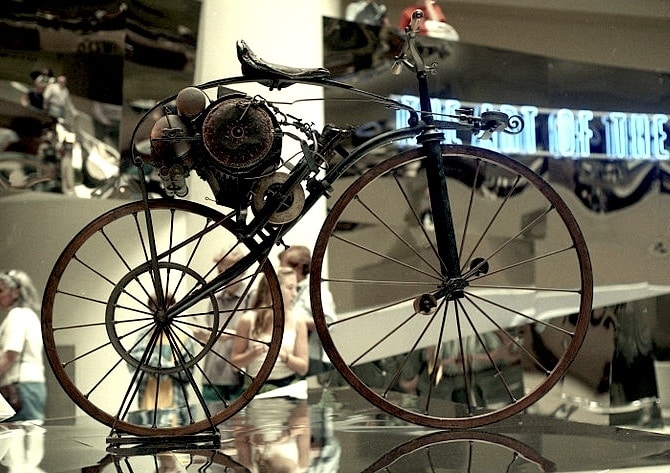
Key specifications included:
- Weight: Approximately 70 kilograms
- Speed: Up to 19 kilometers per hour
- Fuel: Alcohol-fired boiler
- Frame: Modified penny-farthing style
The machine faced significant challenges with weight distribution. The heavy boiler made steering difficult and reduced overall stability.
Perreaux received a patent for his steam engine design in 1868. However, practical testing revealed limited commercial viability due to the complex starting procedure and maintenance requirements.
Global Innovations in Motorized Transport
Engineers across Europe and America experimented with steam-powered transportation devices throughout the late 1800s. These innovations built upon existing steam engine principles developed for industrial use.
British inventor Edward Butler designed the Butler Petrol Cycle in 1884. Though not steam-powered, it demonstrated alternative approaches to motorized two-wheelers.
American contributions included Sylvester Roper’s steam carriage designs. His vehicles incorporated lessons learned from early steam bicycle experiments.
German engineers focused on improving engine efficiency and weight reduction. They developed lighter boiler designs that could heat faster and maintain pressure longer.
The evolution of steam technology during this period influenced motorcycle development. Inventors shared knowledge about cylinder design, valve systems, and fuel efficiency improvements across national boundaries.
Frequently Asked Questions

Steam-powered velocipedes emerged in the 1860s as the earliest motorized two-wheelers. Several inventors created competing designs during this period, with debates continuing about which machine deserves recognition as the true first motorcycle.
Who is credited with inventing the first motorcycle?
Multiple inventors claim the title of creating the first motorcycle. Sylvester Roper built his steam-powered velocipede around 1867-1869 in Roxbury, Massachusetts.
The Roper steam velocipede is one of three machines called the first motorcycle. The other contenders include the Michaux-Perreaux steam velocipede and the 1885 Daimler Reitwagen.
Gottlieb Daimler created his gas-powered machine in 1885. However, Roper’s design included features that still define motorcycles today, such as equal-sized wheels and a twist grip for control.
How did the cost of the earliest motorcycles compare to other vehicles at the time?
Early motorcycles were expensive luxury items that few people could afford. The steam-powered velocipedes required skilled craftsmen to build them by hand.
Most early motorcycles cost more than horses or bicycles. Only wealthy individuals and inventors had access to these experimental machines.
Production costs remained high because manufacturers made small quantities. The complex steam engines and custom metalwork added to the expense.
What company manufactured the first commercial motorcycle?
Hildebrand & Wolfmüller produced what many consider the first commercial motorcycle around 1895. This German company was also the first to use the term “motorrad.”
A Hildebrand & Wolfmüller sold at auction for $132,000, showing its historical importance. The company focused on gas-powered engines rather than steam.
In America, Copeland formed the Northrop Manufacturing Co. in 1887 to produce the first successful “Moto-Cycle.” This was actually a three-wheeler design.
In which year was the first motorcycle produced in the United States?
Sylvester Roper built the first self-propelled two-wheeled machine in America around 1869. His steam-powered bicycle made its first public appearance in Roxbury, Massachusetts.
Roper used a purpose-built wood and iron frame with two 34-inch iron-clad wood wheels in 1867. The steam engine provided the motive power for this early motorcycle.
The bike was popular with the public during its demonstrations. Roper continued developing his design until his death in 1896.
Can you outline a brief timeline of key milestones in motorcycle history?
1867-1869: Sylvester Roper and others created the first steam-powered velocipedes. These machines used steam engines instead of pedals for power.
1876: Nicolaus Otto perfected his four-stroke engine. This development would later enable gas-powered motorcycles to replace steam versions.
1885: Gottlieb Daimler built his gas-powered Reitwagen. This machine used internal combustion instead of steam power.
1887: Copeland formed Northrop Manufacturing Co. to produce commercial motorcycles in America.
1895: Hildebrand & Wolfmüller began commercial motorcycle production in Germany. They coined the term “motorrad” for their machines.
What was the steam velocipede, and how did it influence motorcycle development?
The steam velocipede was a bicycle powered by a small steam engine instead of pedals. Roper’s design included equal-sized wheels front and rear and a twist grip to control acceleration and braking.
Roper’s machine used a two-cylinder oscillating steam engine with a 2.5 inch by 5 inch bore and stroke. The cylinders connected directly to the rear wheel through connecting rods.
Roper’s innovations provided inspiration for inventors during the gas-powered motorbike era that followed. His design established key motorcycle features that manufacturers still use today.
Both of Roper’s steam-powered bicycles still exist with the Smithsonian Institution. The original steam bike remains in the National Museum of American History.
